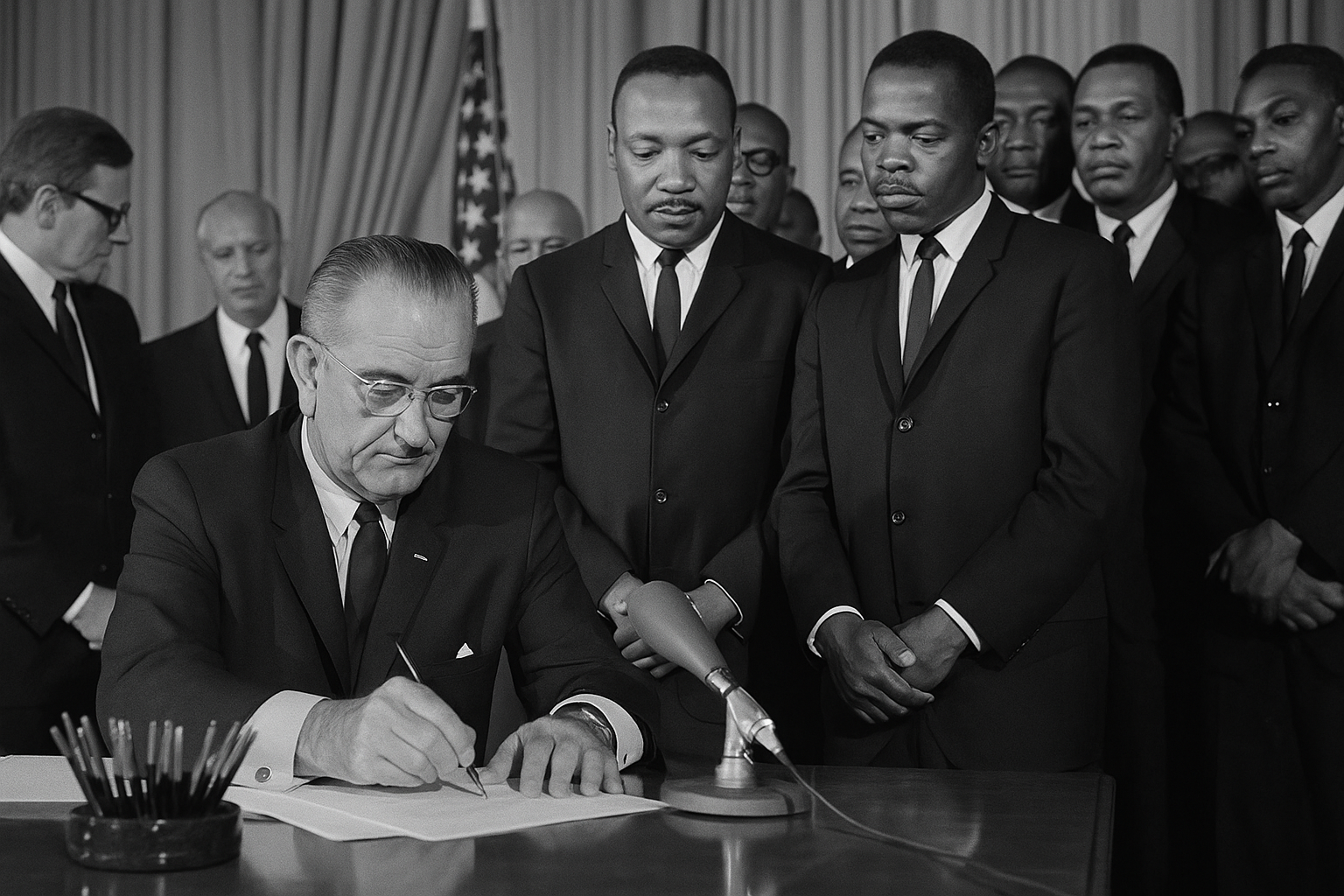Voting Rights Act of 1965
On August 6, 1965, President Lyndon B. Johnson signed the Voting Rights Act, a landmark piece of legislation that outlawed discriminatory voting practices targeting African Americans.
The law banned literacy tests, poll taxes, and other tactics used to suppress Black voters. The Act followed the powerful and tragic events of the Selma to Montgomery marches, where civil rights activists like John Lewis, Dr. Martin Luther King Jr., and thousands of others risked their lives to demand the right to vote.
The horrific violence seen on “Bloody Sunday” helped galvanize national support and push Congress to act. The result was a transformative law that opened the door to political representation for millions of Black Americans.
Bloody Sunday
On March 7, 1965, peaceful civil rights demonstrators were violently attacked by police on the Edmund Pettus Bridge in Selma, Alabama.
Here’s what happened:
- About 600 activists, led by John Lewis and Hosea Williams, were marching from Selma to Montgomery to demand voting rights for Black Americans.
- As they crossed the bridge, state troopers and local law enforcement directed them to turn back. Undeterred, the marchers stood their ground, prompting a fierce response from the troopers using clubs, whips, and tear gas.
- When the marchers did not retreat, state troopers violently attacked them with clubs, whips, and tear gas.
- The entire scene was broadcast on national television, shocking the nation and drawing widespread outrage. This event became a turning point in the Civil Rights Movement.


